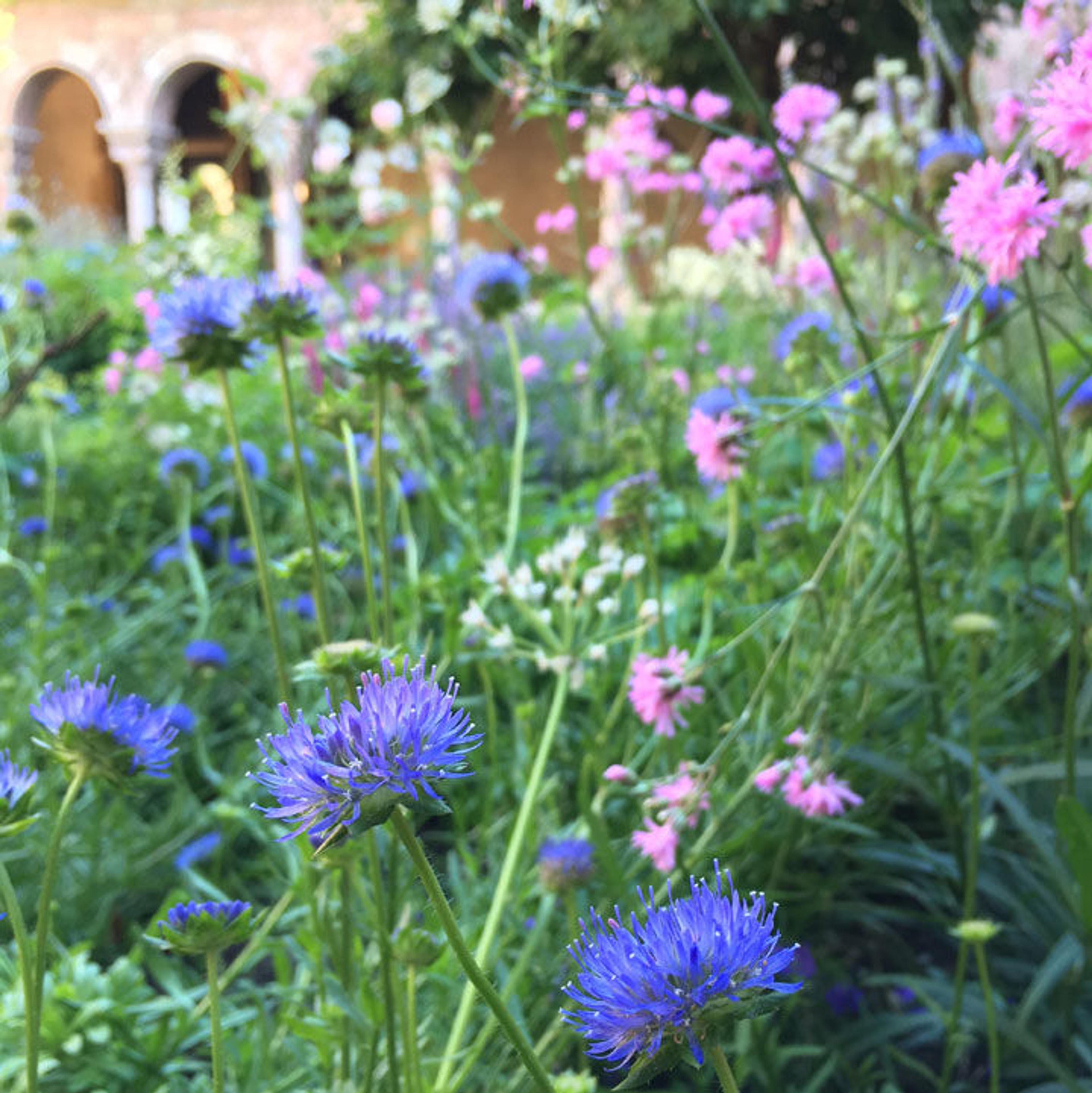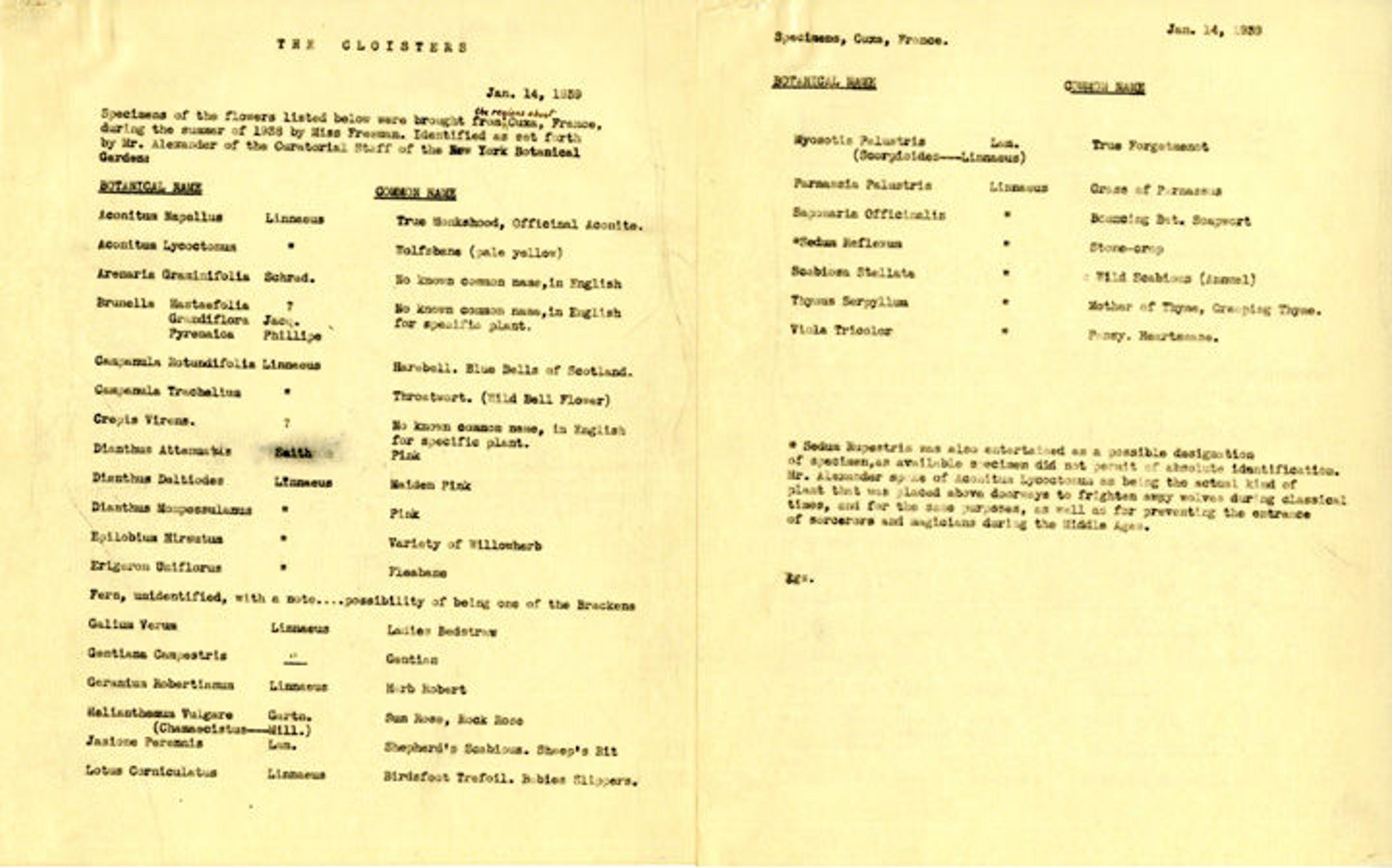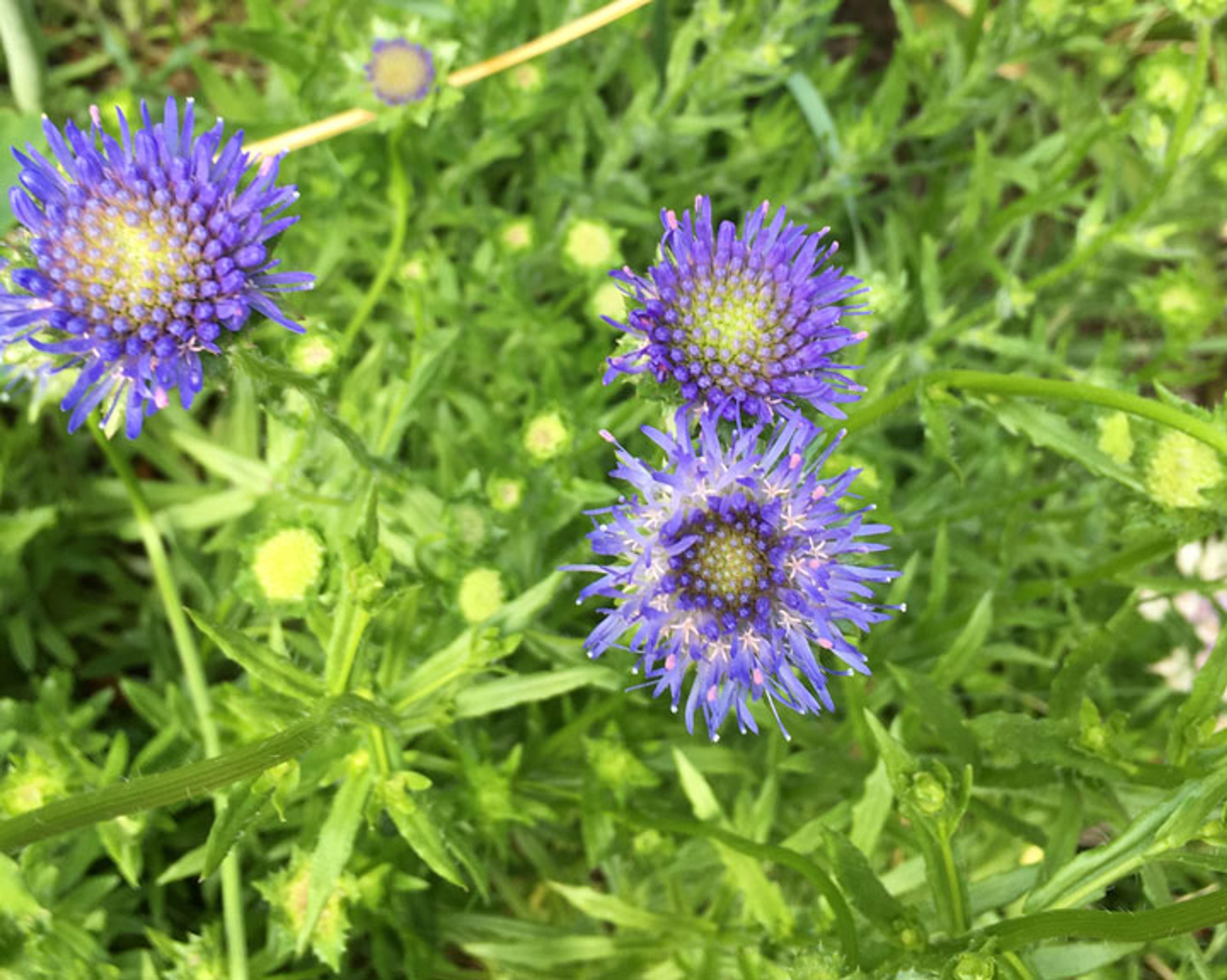A Handful of Wildflowers

Shepherd's scabiosa (Jasione perennis) in bloom at The Met Cloisters. Photo by the author
«Much of the planning for the summer garden at The Met Cloisters takes place during the cold, short days of January and February. In thinking about the ornamental Judy Black Garden in the Cuxa Cloister, a natural source of inspiration is the landscape of the original home of the cloister: the craggy mountains and wildflower-strewn meadows of the Pyrenees.»
I recently found a list of plants in our archives that identifies 26 wildflowers collected in the regions surrounding the abbey of Saint-Michel-de-Cuxa in southwest France. The wildflowers were collected by Margaret B. Freeman—a former curator and director of The Met Cloisters—and later identified by the botanist E.J. Alexander from the New York Botanical Garden.
Ms. Freeman's name may be familiar to readers of her books, which include The Unicorn Tapestries and her succinct and timeless Herbs for the Mediaeval Household for Cooking, Healing, and Divers Uses. This slim volume, delightfully illustrated with medieval woodcuts, is still of great use in interpreting the herbs found in our Bonnefont Herb Garden. Drawing from medieval herbals, cookbooks, and treatises, Ms. Freeman describes 84 different herbs prized by the medieval household—most of which were cultivated by the Museum's first head gardener, Hildegard Schneider, and continue to be included in our gardens today.
More than anyone else, Ms. Freeman was most responsible for developing our list of medieval medicinal, culinary, and symbolic herbs. Time and again she enlisted the botanist at the Botanical Garden to identify representations of plants found in the Museum's collection. The same botanist, E.J. Alexander, who typed the list of wildflowers shown below, was an author of one of the most complete botanical studies of the flora in The Unicorn Tapestries. To learn more about Ms. Freeman's methodical and exhaustive research, be sure to read "Among the Lilies," originally published on The Medieval Garden Enclosed.

Alexander's list of the flora collected by Ms. Freeman in Cuxa
Many of the 26 diminutive wildflowers listed here are relatively obscure, and only a few appear on our medieval plants list. While most of the plants had some practical or symbolic value, we need satisfactory visual and textual representations from the medieval record in order to warrant inclusion in our list.
This little list reveals another aspect of Ms. Freeman's passion for the gardens here that extends beyond the study of a plant's practical application: it provides evidence of Ms. Freeman's efforts to develop the gardens in ways that would further resonate with the origin of The Met Cloisters. I can only assume her request for the identification of the flowers was elucidated by her desire to cultivate them in the gardens.

Close-up image of the Jasione perennis. Photo by the author
The Met Cloisters is often described as a place for visitors to be transported to the Middle Ages. I like to reflect on the possibility that some of the wildflowers in the Judy Black Garden within the Cuxa Cloister contain a bit of the same germplasm of those plants collected by Ms. Freeman in the summer of 1938, or perhaps even from the wildflowers enjoyed by the Benedictine monks from the medieval abbey of Saint-Michel-de-Cuxa.
Related Links
The Medieval Garden Enclosed: "Among the Lilies" (November 22, 2010)
View In Season articles related to medieval gardening at The Met Cloisters.
Caleb Leech
Caleb Leech is the managing horticulturist at The Met Cloisters.